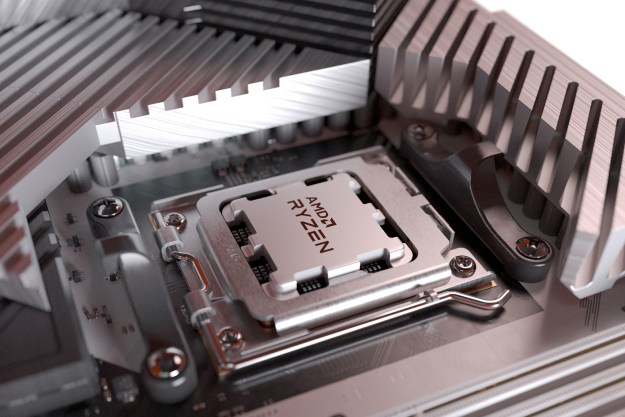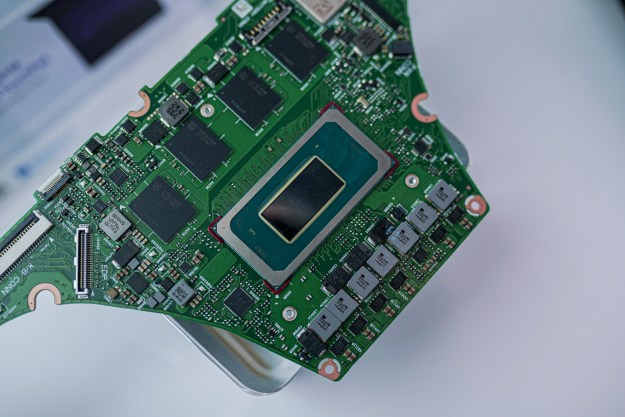The benefit of “hybrid” technology is all about efficiency. That’s as true in the world of computing as it is in the world of cars.
But your Toyota Prius isn’t exactly known for its unbridled power, and neither is your highly efficient smartphone. Why, then, is Intel betting its 12th-generation Alder Lake processors on a hybrid model?
Well, Intel has a different car metaphor in mind. The modern hybrid race car. One that uses its electric engine to achieve maximum acceleration, while reserving its traditional combustion engines for raw horsepower. That’s the kind of advantage Intel claims to benefit from with its hybrid technology, and today, the company revealed just how it hopes to do that.
Performance hybrid

At its most basic, hybrid computing means bringing together two types of CPU cores in one package: Big, performance cores for heavy tasks and small, efficient cores for everything else. It’s at the heart of how modern smartphone chips function, spearheaded by ARM’s “big.LITTLE” concept.
Intel’s own experiments with hybrid technology so far have not been all that successful. The initial product, code-named Lakefield, launched in 2020. It showed up in just a few mobile devices, most of them with unique form factors, such as the Lenovo ThinkPad X1 Fold.
A hybrid approach for Alder Lake always needed to be about more than battery life.
While interesting in its own right, the “hybrid” approach had some serious performance issues. Not only were these devices not designed to be powerhouse computers, they even struggled to run basic Windows functions well. More importantly, though, a hybrid approach for Alder Lake always needed to be about more than battery life. It would need to provide performance advantages that could be scaled up to 125-watt chips in desktop systems.
The first solution? Beefing up each of the two kinds of cores used in Alder Lake. Both the Golden Cove and Gracemont cores are based on Intel 7, the company’s new name for its Enhanced 10nm SuperFin node. This comes with support for DDR5 memory and PCIe 5.0.

The new processor will feature up to 16 cores and 24 threads — with eight of those cores being “performance” cores and eight being “efficiency” cores. Intel finally confirmed, after many rumors, that the performance cores will use hyperthreading (two threads per core), while the efficiency cores will not.
These performance cores, which are known by the code name Golden Cove, look to bring some serious architectural enhancements over its predecessors, Sunny Cove (for Tiger Lake mobile) and Cypress Cove (for Comet Lake desktop).
First, the memory is both bigger and faster, with a shared cache of up to 30MB. The L1 cache has more load ports, a deeper load and store buffer, and reduced load latency.
There are dedicated architectural features to optimize everything from emerging workloads to the new Matrix engine used for hardware-accelerated machine learning. This new coprocessor, the kind of which that is normally found in GPUs, is made to assist in processing A.I. workloads with large data sets.
There’s also a new power management controller for “fine grain power budget management.”
According to Intel, all the changes should result in “higher frequency in any given application” using these Golden Cove performance cores.
Intel says the performance cores bring single-threaded high frequencies to the table, while the efficiency cores (also known as Gracemont cores), are all about multithreaded performance. That’s what Intel means when it calls Alder Lake a “performance hybrid” processor.
Multi-core performance in particular is an area Intel has been struggling in lately, constantly losing in benchmarking to the likes of AMD and Apple’s ARM-based chips. Intel says these efficiency-based Gracemont cores are 40% more powerful than the old Skylake cores at the same wattage.

There’s a lot we still don’t know, of course. Early leaks showed that some lower-end desktop configurations featured six cores and 12 threads, meaning this hybrid approach may not end up being used across the board. We’ll learn more about how the lineup plays out closer to launch later this year.
Even still, improved cores are only half the battle. In order for Intel’s hybrid approach to truly succeed, it would also need a way to smartly coordinate how these two cores work together. That’s where Intel Thread Director comes in.
Intel Thread Director

Speaking to press and analysts at its Architecture Day event, Intel revealed the Thread Director, a hardware-based scheduling feature that coordinates directly with the operating system in a far more efficient way.
Without the Intel Thread Director, the operating system scheduler would have to make decisions about what tasks to allocate or prioritize without real-time data from the processor. It could determine whether an application is foreground or background, but Intel says that lack of information could lead to the system making suboptimal decisions.
Intel calls the Thread Director “intelligence built directly into the core.”
The Intel Thread Director opens up the line of communication between the processor and the operating system scheduler, specifically around what instructions to assign to certain cores. Intel calls it “intelligence built directly into the core” that moniors the instruction mix, as well as the current state of each core.
Intel demonstrated how all this works with a demo, which showed how the Thread Director would assign certain tasks either to the performance cores or the efficiency cores. The demo showed moment-by-moment changes, with the system dynamically directing threads to either the performance cores or the efficiency cores.

“Everything is dynamic based on the current context of what is running on the system, all augmented by hardware telemetry,” said Intel client architect Rajshree Chabukswar.
The full impact of Intel Thread Director will be felt in Windows 11, the upcoming release from Microsoft. The two companies have partnered closely to integrate features in Windows 11 that play nice with Intel Thread Director. Intel says the benefits will be felt in Windows 10 as well, but the implementation in
With rising rivals from AMD and ARM, a lot is riding on the success of 12th-gen Alder Lake. Now that we have a clearer idea of what Intel is trying to do with its hybrid technology, the stakes are even higher. We won’t know how it all comes together until the processor launches later this year, but this new approach to hybrid architecture is certainly ambitious — and could be the beginning of an important new era for Intel.
Editors' Recommendations
- Some Intel CPUs lost 9% of their performance almost overnight
- Gamers are reportedly returning Intel Core i9 CPUs in droves
- How Intel and Microsoft are teaming up to take on Apple
- Reviewers agree: Intel’s latest chip is truly ridiculous
- Here’s a shocking reminder of just how far ahead Intel is in race with AMD


